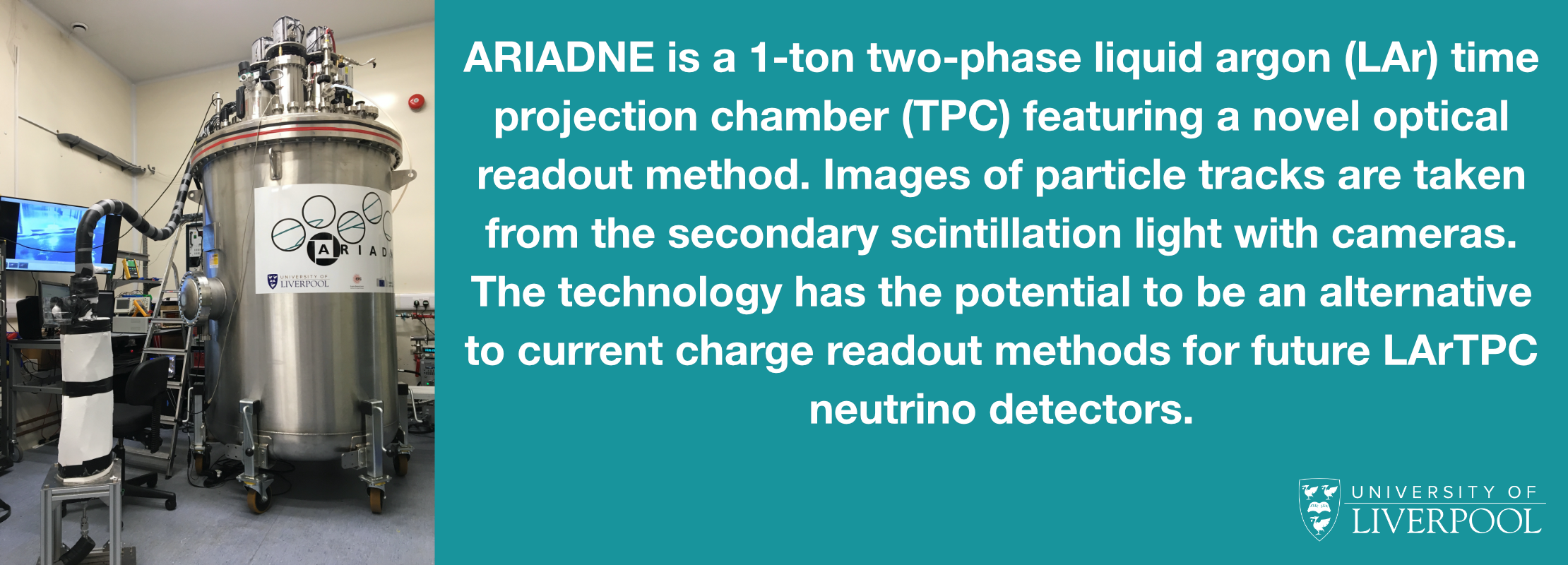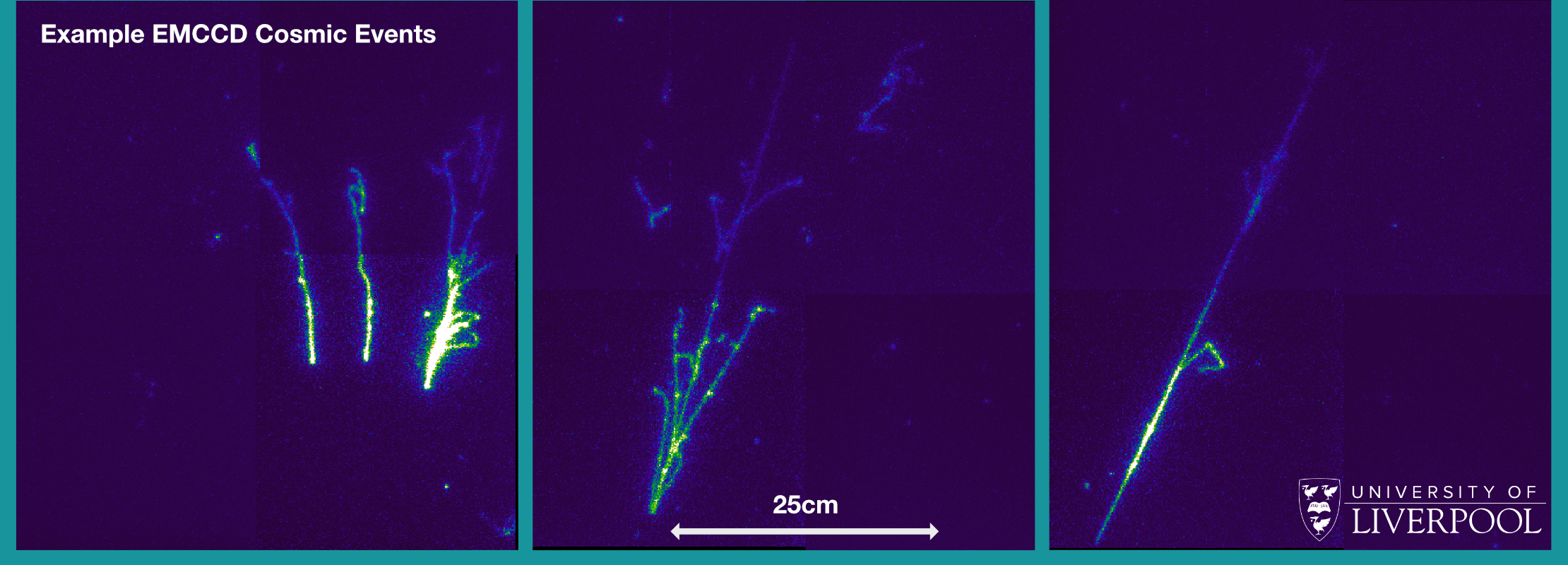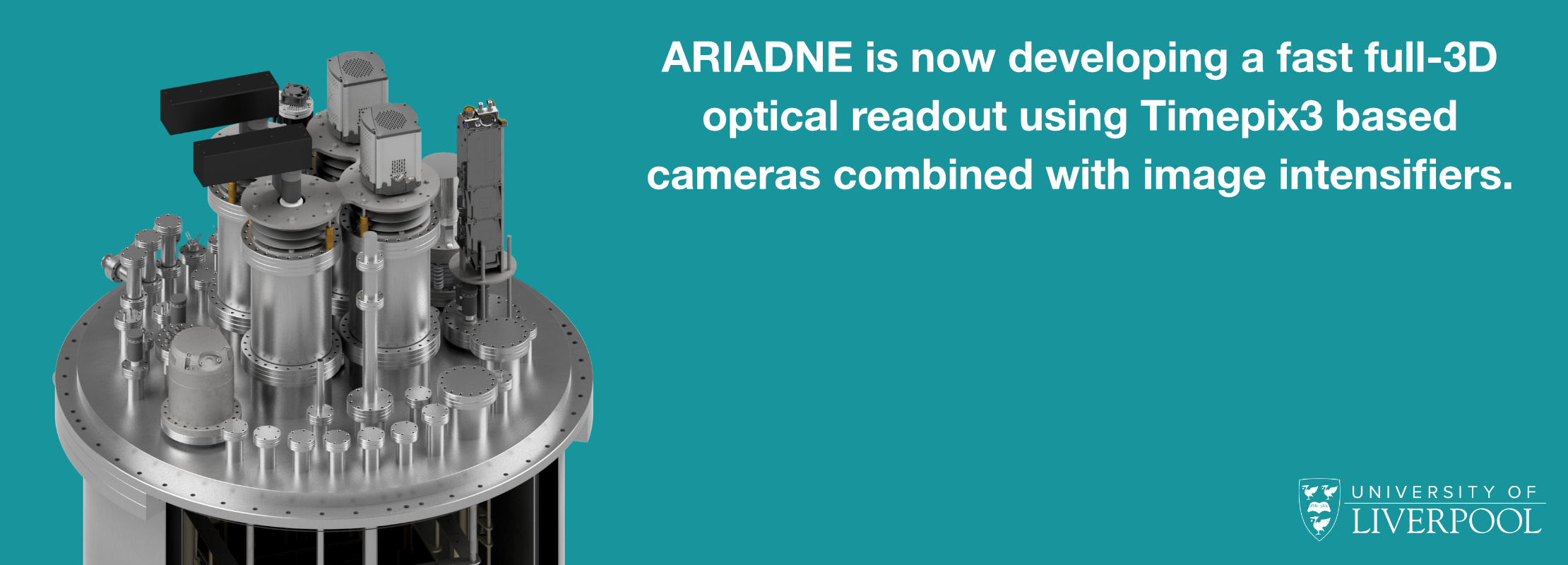ARIADNE
Argon Imaging Detection Chamber
ARIADNE is able to provide excellent particle track reconstruction, utilising single photon sensitive cameras to capture secondary scintillation light produced in one or more thick electron gas multipliers (THGEMs). This is a novel approach, providing an alternative to the current paradigm of charge readout technology.
Example of cosmic events taken with the Timepix Camera. Visible is a 20msec drift window.
Optical Readout Method
- In the gas phase, drifted electrons enter the THGEM and are accelerated by the strong E-field, causing a Townsend discharge, resulting in a very large gain.
- During this process electroluminescence photons at 128nm are emitted (S2 signal).
- The photons are wavelength shifted to the visible part of the spectrum with TPB .
- Timepix cameras then 'image' this light.
- The raw 3D readout of the S2 signal, provided by the Timepix, combined with S1 PMT signals allows for a full 3D reconstruction of particle tracks and interactions.





Timepix Cosmic Events
The ARIADNE Detector
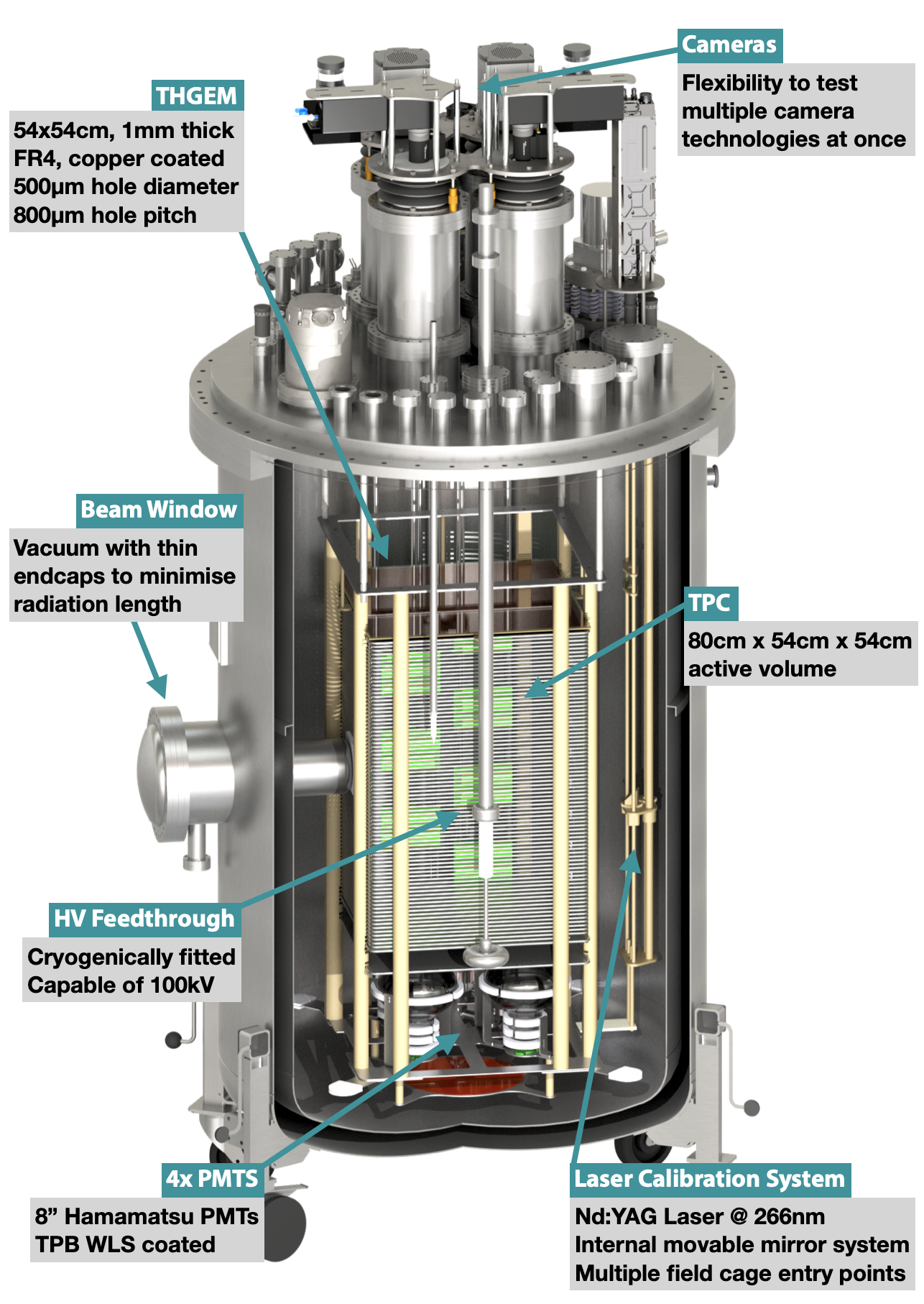
Benefits
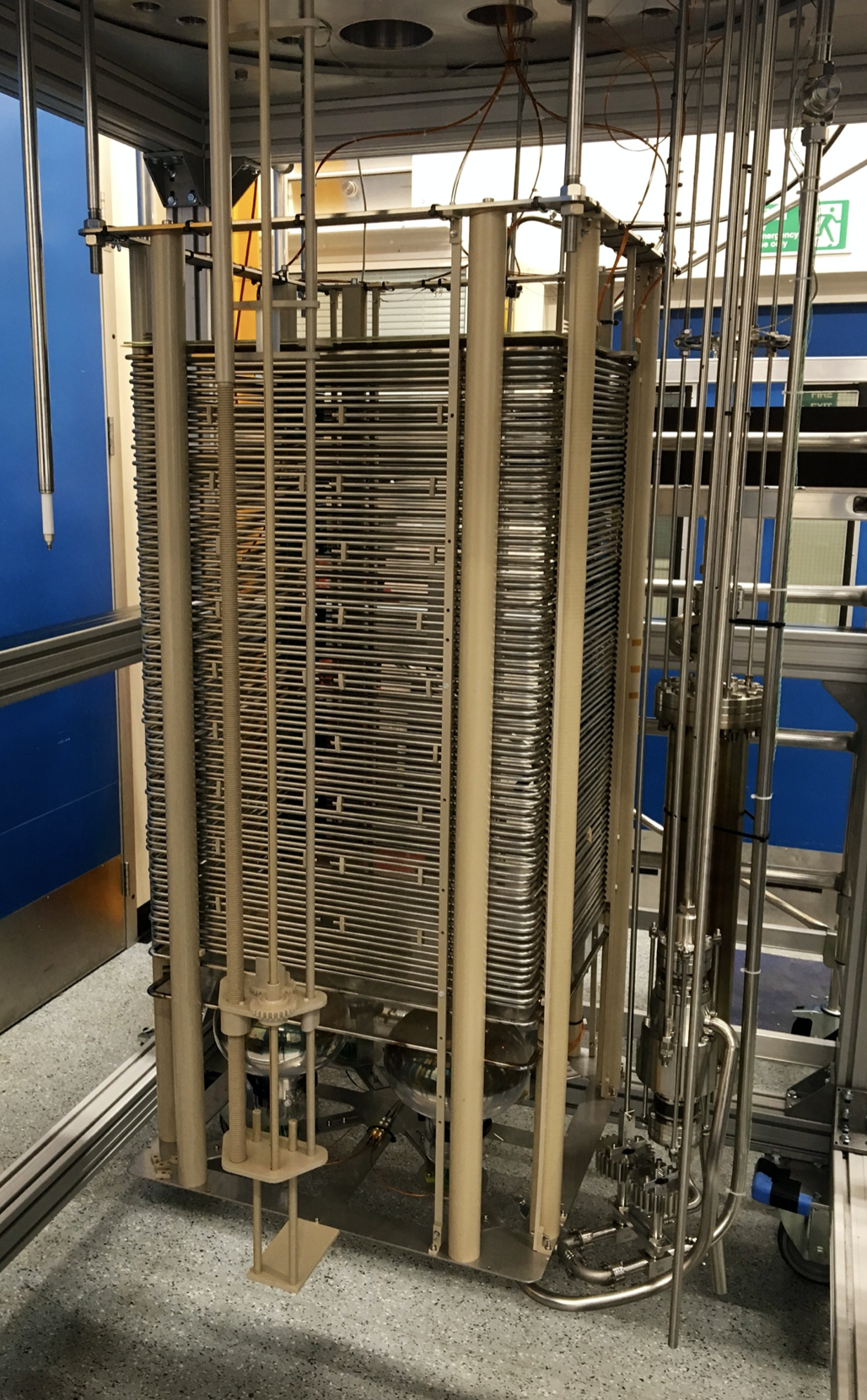
- High resolution — the detector is nominally run with an effective resolution of 1.3mm/pixel.
- Sensitivity to low energies — a combination of the gain generated in the THGEM and the single-photon sensitivity of the cameras.
- Very low noise — Camera readout noise is decoupled from TPC noise sources.
- Room temperature electronics — The cameras are external to the cryostat keeping cold electronics and feedthroughs to a minimum
- Ease of access — Improved future optical readouts can easily be swapped in and out, even during operation (Eg. Timepix4).
- Cost — elimination of readout electronics: preamps, digitisers, etc.
Timepix Cameras
- The Timepix camera is an optical sensor bump bonded to Timepix3 ASIC with a Spidr readout board.
- Before reaching the camera the light goes through an amplification stage in an intensifier.
- Timepix uses asynchronous hit based data-driven readout (at 80MHits/s) - it has natural zero suppression of data.
- Simultaneous Time-of-Arrival (Timing & Position) and Time-over-Threshold (Calorimetry) data is recorded for each hit.
- The Timepix chip has a 256x256 pixel readout area (pixel size 55µmx55µm) giving an effective resolution of 1.3mm/pixel.

Interested?
If you are interested in post-graduate studies at the Liverpool LAr Facility, or if you are interested in collaborating with us, please contact Dr Kostas Mavrokoridis.
The ARIADNE program is proudly supported by the European Research Council (Grant No. 677927) and the University of Liverpool.
